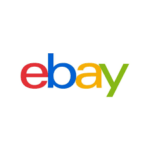E-commerce entrepreneurs, new sellers on Amazon and other platforms, and small business owners in the e-commerce space all face similar challenges when it comes to product sourcing. These challenges include finding reliable suppliers, avoiding low-quality products, and balancing profit margins while managing shipping and fulfillment costs.
But one of the most frustrating issues sellers encounter is when a manufacturer sends a high-quality sample, but the bulk shipment falls far short of that same standard.
This bait-and-switch tactic often catches new sellers off-guard, leaving them with subpar products and angry customers – and no easy way to resolve the issue without incurring extra costs for returns or replacements.
Hence, this leaves many sellers wondering: Should you contact manufacturers directly, or is working with a sourcing agent a safer route?
New sellers often experience analysis paralysis, unsure whether to start with dropshipping, wholesale, or private labeling. On the other hand, small businesses trying to scale worry about outgrowing existing suppliers or facing hidden fees that eat into their profit margins.
Having worked with dozens of e-commerce businesses, we’ve uncovered the most effective strategies for sourcing products – ensuring you get exactly what you pay for. With the right approach, you’ll secure high-quality products, build trustworthy supplier relationships, and maximize profits, all while avoiding the common pitfalls that could hold your business back.
What Is Product Sourcing?
Product sourcing is the process of finding reliable suppliers or manufacturers to provide products for resale. It involves identifying, negotiating, and securing inventory, whether through wholesalers, private-label manufacturing, or dropshipping. For online sellers, product sourcing means profitability, high product quality, and efficient delivery.
It’s about finding the right supplier that fits your business model and growth strategy. For e-commerce stores, product sourcing decisions impact everything from profit margins to customer satisfaction. New sellers need to choose between options like dropshipping, which requires minimal upfront investment, or wholesaling, which offers better margins but demands more storage and capital.
Existing small businesses often have to choose among supplier reliability, shipping timelines and scaling operations without disrupting current workflow.
And if it happens that you make poor sourcing decisions, there is a high probability you’ll experience stockouts, quality control issues, and high return rates, all of which can hurt your reputation and bottom line.
That’s why understanding sourcing methods and working with trustworthy suppliers is essential for sustainable business growth and scaling.
Product Sourcing Methods
The product sourcing method you choose depends on your business model, budget, and target audience.
Below are the most common product sourcing methods, with insights into their pros, cons, and ideal use cases.
| Product Sourcing Methods | Pros | Cons | Best For |
| Dropshipping | No need for upfront inventory investment.Minimal risk with low operational overhead.Ideal for new sellers testing different product categories. | Lower profit margins due to higher product costs.Limited control over product quality and delivery speed.Stock availability may fluctuate without warning. | New sellers or small businesses exploring product-market fit with minimal risk. |
| Wholesaling | Better profit margins than dropshipping.Greater control over product selection and inventory levels.Bulk orders reduce shipping costs over time. |
Requires upfront capital and storage space.Inventory management can be complex and prone to overstock issues. | Established businesses with sufficient capital and warehouse capacity, or e-commerce companies scaling product offerings. |
| Private Labeling | Full control over branding, packaging, and product design.Higher profit margins with differentiated products.Helps build long-term brand recognition | Requires upfront investment in product customization.Long lead times due to product development and manufacturing | Businesses focused on building a brand identity and improving customer loyalty with exclusive products. |
| Manufacturing Partnerships | Total control over product specifications and quality.Ideal for creating unique products that set your business apart.Higher margins if done at scale. | Requires significant capital and long production cycles.Managing overseas manufacturing can introduce logistical challenges. | Established businesses or entrepreneurs looking to develop custom, unique products that align with their brand. |
| Using Product Sourcing Agents | Saves time by outsourcing supplier vetting and negotiation.Reduces the risk of working with unreliable suppliers.Helpful when sourcing from overseas manufacturers with language barriers. | Additional fees for the agent’s services.Reliance on a third party for supplier relationships. | Businesses looking for reliable suppliers without dedicating internal resources to sourcing. |
| Sourcing from Product Marketplaces and Websites | Easy access to global suppliers with various product categories.Transparent pricing and supplier reviews available online.Ability to compare multiple suppliers quickly. | Supplier reliability can vary.Some platforms may require vetting before finding high-quality suppliers. | Businesses looking for low-cost suppliers or those sourcing products across multiple categories. |
Best Product Sourcing Websites
We curated a list of the best product sourcing websites, like Alibaba, along with their unique features and ideal use cases, to help you source smarter.
Alibaba
A global marketplace that connects businesses with manufacturers and wholesalers specializing in bulk orders.
Best for:
- Wholesalers and private labelers looking for large-volume orders.
- Businesses sourcing custom products or working directly with manufacturers.
Key features:
- Wide variety of product categories.
- Customization options for private-label products.
- Trade assurance and supplier vetting for safe transactions.
Oberlo (via Shopify)
Oberlo is a dropshipping app that connects Shopify stores with product suppliers.
Best for:
- Shopify store owners looking to add products without holding inventory.
- New sellers who want easy integration with dropshipping operations.
Key features:
- Seamless integration with Shopify stores.
- Automated product updates and order processing.
- Access to trending products and supplier ratings.
Faire
Faire connects small businesses with wholesale suppliers in categories such as home goods, apparel, and beauty.
Best for:
- Small businesses and boutiques sourcing unique, high-quality products.
- Retailers seeking wholesale options with no middlemen.
Key features:
- Net 60 payment terms for easier cash flow management.
- Access to independent brands and unique products.
- Free returns on first-time orders from new suppliers.
Product Sourcing Agent: When and Why You Need One
A sourcing agent or an agency is an intermediary between your business and suppliers. They often do the heavy lifting of finding dozens of potential manufacturers, doing a background check to assess reliability and analyzing every proposal to the finest detail.
But how do you know whether hiring a product sourcing agent will grow your business?
When You Need a Product Sourcing Agent
| Sourcing Products from Overseas Markets | If you plan to source products from countries like China, India, or Vietnam, managing time zones, language barriers, and cultural differences will take a lot of effort. Sourcing agents help bridge these gaps and connect you with reliable suppliers. |
| Dealing with Custom Manufacturing Requirements | When you need a custom product (e.g., private label items or innovative designs), a sourcing agent makes sure that manufacturers meet your exact specifications. |
| Complex Supply Chains | If your supply chain involves multiple suppliers or manufacturers, a sourcing agent can coordinate logistics, manage lead times, and reduce the risk of delays. |
| Vetting and Quality Control for New Suppliers | When working with new suppliers, you have to verify their reliability and product quality. Sourcing agents perform due diligence by visiting factories, inspecting products, and ensuring compliance with your standards. |
| Scaling Operations Quickly | If you’re scaling your business and need additional suppliers or larger order volumes, a sourcing agent helps you expand without compromising product quality or delivery timelines. |
When NOT to Use a Product Sourcing Agent
Small orders or one-time purchases
If you only need a small batch of products or are testing a new category, hiring a sourcing agent may not be cost-effective.
Local sourcing needs
If you’re sourcing products domestically, direct supplier relationships are often more practical and affordable.
Pro Tips for Choosing a Sourcing Agent
The best sourcing agents have local representatives who can visit factories, inspect products firsthand, and negotiate with manufacturers directly. Having someone on the ground helps you avoid miscommunication and ensures that your product quality matches your expectations throughout the production process – not just during the sample phase.
Unfortunately, in some cases, agents may receive kickbacks or incentives from suppliers to steer clients toward specific manufacturers – at the cost of quality. Make sure the sourcing agent is transparent about their supplier relationships and works solely in your best interest.
Some sourcing agents request a percentage-based fee tied to your total order value, which can create a conflict of interest. This model incentivizes the agent to push for higher order volumes or costs, even if it’s not in your best interest.
Pro tip: Negotiate a flat fee. This keeps your agent focused on getting the best deals and making sure they are working towards your profit margins, not theirs.
And finally, some agencies keep the supplier’s contact information to themselves, preventing you from communicating directly with manufacturers. This leaves you dependent on the agency for future orders, increasing costs and limiting your control over negotiations and production.
How to Source Products to Sell Online – Step-by-Step Guide
We’ve brought Sebastian Herz and talked in depth about how to choose suppliers, check reliability, and even how important it is to have a truly unique product. You’ll find true gems here directly from product sourcing agency owners who saved their clients more than 300 million dollars.
1. Identify the Products You Want to Sell
Before you start searching for suppliers, you need a crystal-clear idea of what you’re going to sell. But we’ve prepared top tips to help you choose the right product:
- Use Google Trends, Jungle Scout, or Pinterest can show what’s trending and what customers are actively searching for.
- The best products address common problems or needs. Think about what people are frustrated with or what could make their life easier.
- Instead of selling general “fitness equipment,” why not try resistance bands for travelers or skincare products featuring peptides? Niching down reduces competition and builds a loyal customer base.
- Research competitor products, especially ones with negative reviews, and identify areas where customers feel frustrated. Use this feedback to improve your product and offer a better experience.
Example: Rather than selling generic coffee mugs, you decide to focus on motivational mugs for entrepreneurs. This micro-niche appeals to a specific group and makes marketing much easier.
2. Find Reliable Suppliers
Finding the perfect supplier is like dating – you need trust, good communication, and shared goals. There are a few ways to go about finding suppliers, depending on your business model.
Always reach out to multiple suppliers before committing to one. Ask questions about minimum order quantities (MOQs), shipping times, and product samples to compare your options.
3. Request Product Samples
Never skip the product sample phase. You wouldn’t buy a car without a test drive – so why trust a product sight unseen? Samples give you a firsthand look at quality, packaging, and overall product feel.
Pay special attention to:
- Material and build quality: Is it durable and true to description?
- Packaging: Does it arrive in good condition? Is it branded?
- Functionality: Does it work as advertised? Are there any design flaws?
4. Calculate Costs and Margins
Costs aren’t just the product cost – shipping, customs, and storage fees can sneak up on you. The goal is to price your products attractively while still making enough profit.
You can calculate product margins by calculating:
- Total product cost: Unit price + shipping + storage (if applicable).
- Selling Price: The price at which you plan to sell the product.
And then, you can calculate the gross profit margin. Here is the formula:
| Gross Profit Margin=(Selling PriceSelling Price−Cost of Goods Sold (COGS))×100 |
5. Set Up Logistics and Fulfillment
You’ve found the perfect product, negotiated a great price – now, how are you going to get it into customers’ hands?
There are various shipping methods you can consider:
- Dropshipping: Supplier ships directly to your customer – no storage required.
- Third-party logistics (3PL): Outsource warehousing and fulfillment to companies like ShipBob or Amazon FBA.
- In-house fulfillment: Manage packaging and shipping yourself (works best for small operations).
Expanding Your Product Sourcing Strategy with Amazon
Sourcing products for Amazon requires a slightly different approach than traditional e-commerce channels. You can use Amazon FBA software tools or handle your own logistics, but the first thing you need to take care of is to align your product sourcing with Amazon’s marketplace trends.
Amazon FBA Software
Amazon FBA software tools simplify operations by automating inventory management, price tracking, and order fulfillment. Tools like Jungle Scout and Helium 10 also provide detailed product research insights, helping you spot trending items and forecast demand accurately.
Reselling on Amazon: Find the Right Products
Purchasing items from wholesalers or retail stores and reselling on Amazon at a profit remains a popular business model. It’s essential to source products with solid demand and limited competition to run a profitable reselling business on Amazon. One of the best tips we can give you is to look for popular consumer categories like electronics, beauty products, and home essentials, which tend to perform well on Amazon.
Identify the Top Items to Sell on Amazon
Understanding current trends is one of the most important things when sourcing products. The top items to sell on Amazon often vary seasonally, so you should leverage tools like Google Trends or Amazon’s own Best Sellers list to identify high-demand products. Categories such as health supplements, kitchen tools, and fitness gear are consistently top-performing niches.
Start an Amazon Business with the Right Sourcing Strategy
If you’re wondering how to start an Amazon business, the first step is deciding on your business model – whether it’s dropshipping, private labeling, or wholesaling. Sourcing reliable products at competitive prices is essential to gaining traction on Amazon. Using platforms like Alibaba for bulk purchases or working with local suppliers can give you an edge.
Conclusion: Make Product Sourcing Work for You
It’s not important whether you choose dropship to minimize risks, wholesaling for higher profit margins or private labeling to create a unique brand. The key to your success actually lies in making strategic decisions.
Let’s recapitulate the key steps you can take right now to make product sourcing a success:
- Start small with samples: Before placing bulk orders, always request samples from multiple suppliers. Compare quality, packaging, and delivery times to avoid unpleasant surprises.
- Calculate margins: Use the gross profit margin formula to ensure your pricing covers product costs, shipping, and platform fees. Aim for a margin of 30-50% to stay profitable even after marketing expenses.
- Diversify your suppliers: Avoid relying on a single supplier. Build relationships with backup suppliers to protect yourself from stock outs or delays during peak seasons.
- Leverage technology: Use Amazon FBA software tools or inventory management systems to automate product tracking and streamline fulfillment.
- Stay ahead with market research: Regularly check for top-selling items on Amazon and use platforms like Google Trends to monitor demand. Adjust your product offerings based on market trends to keep your store relevant.
FAQ
A source product refers to an item acquired from a supplier, wholesaler, or manufacturer to be sold online or in retail, forming the foundation of a seller’s product catalog.
You can find product sourcing through methods like dropshipping, wholesale purchasing, private labeling, or working with sourcing agents. Popular platforms such as Alibaba, AliExpress, and Faire help connect sellers with reliable suppliers.
An example of a product source is using Alibaba to purchase bulk fitness equipment for resale or working with a private label manufacturer to create a custom skincare line under your brand.
Sourcing stuff means finding and securing products, raw materials, or inventory from suppliers or manufacturers for the purpose of resale or production, ensuring they meet quality and pricing requirements for your business.



